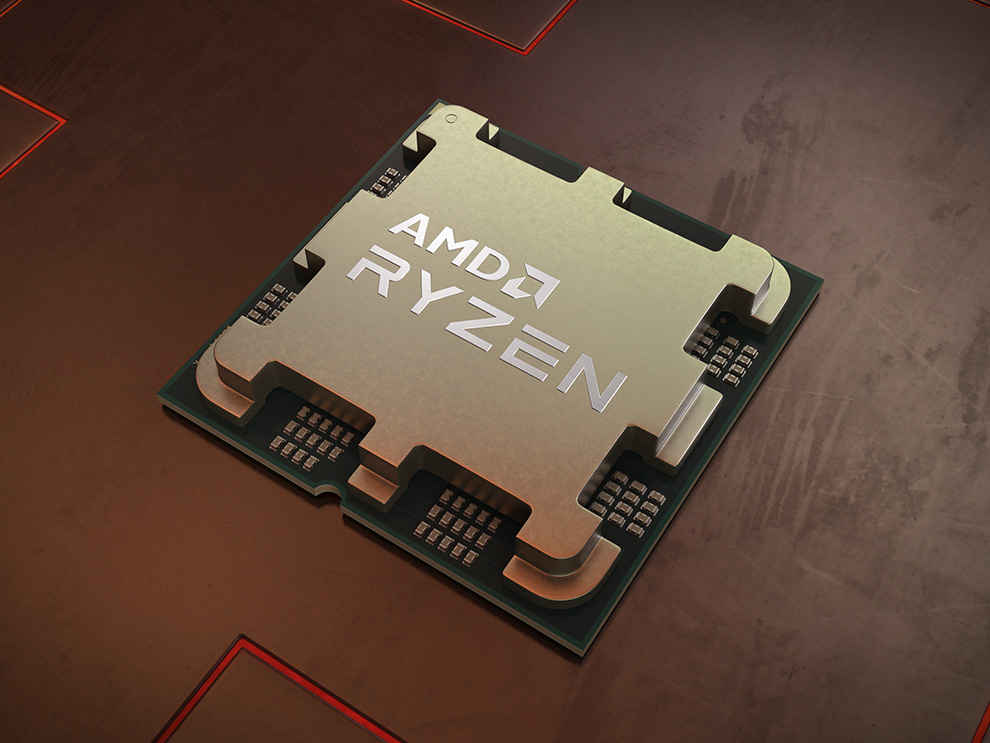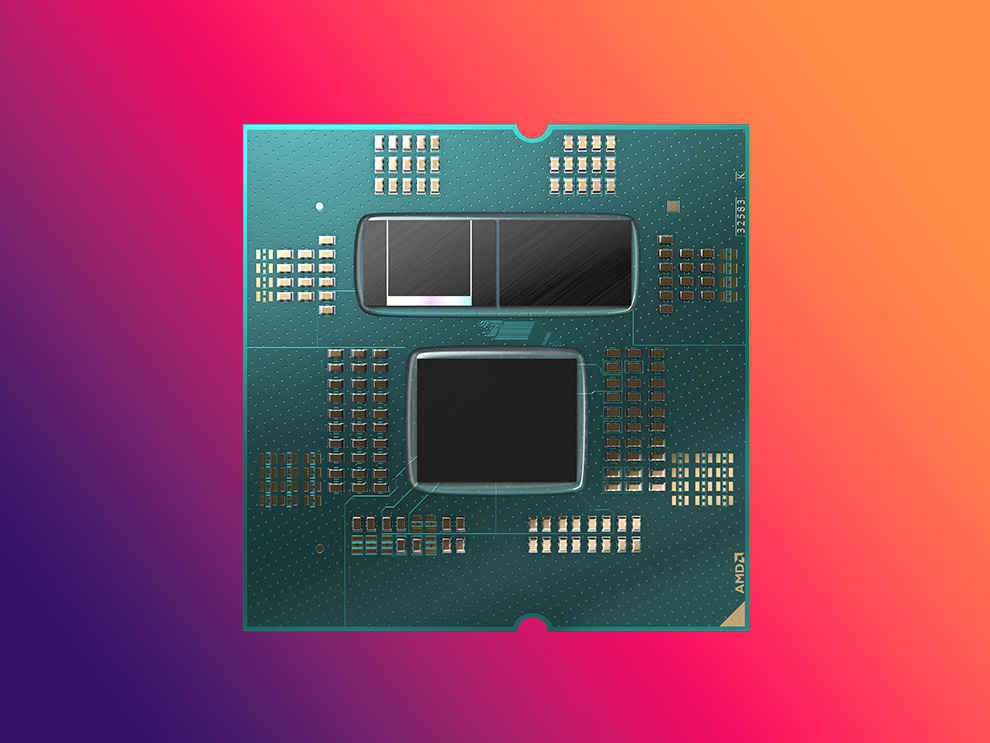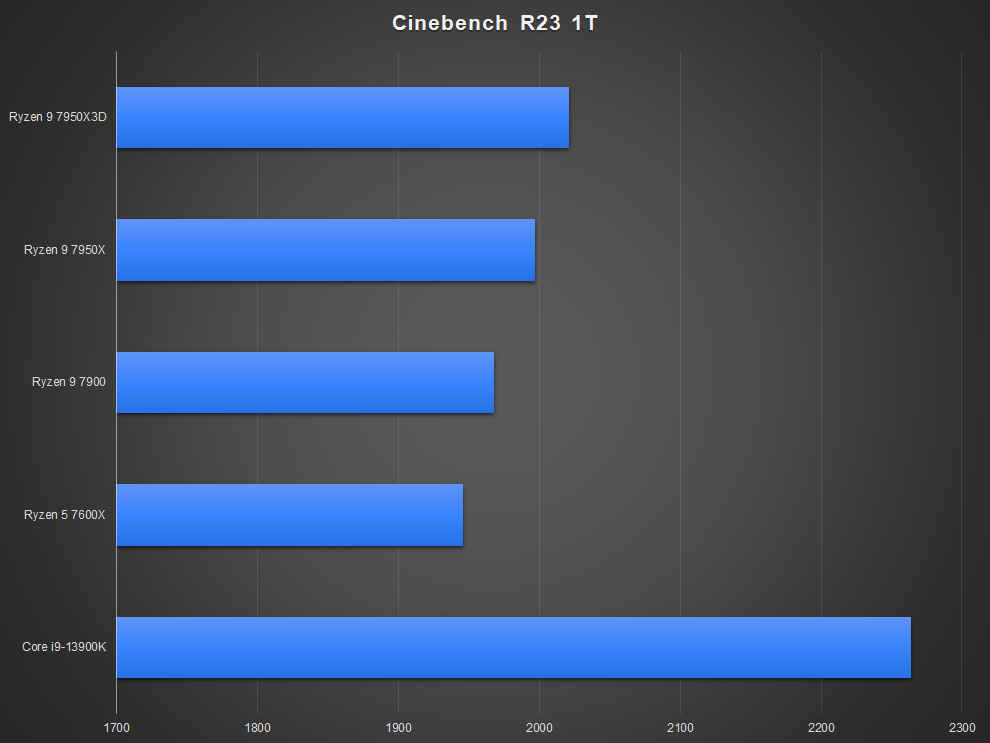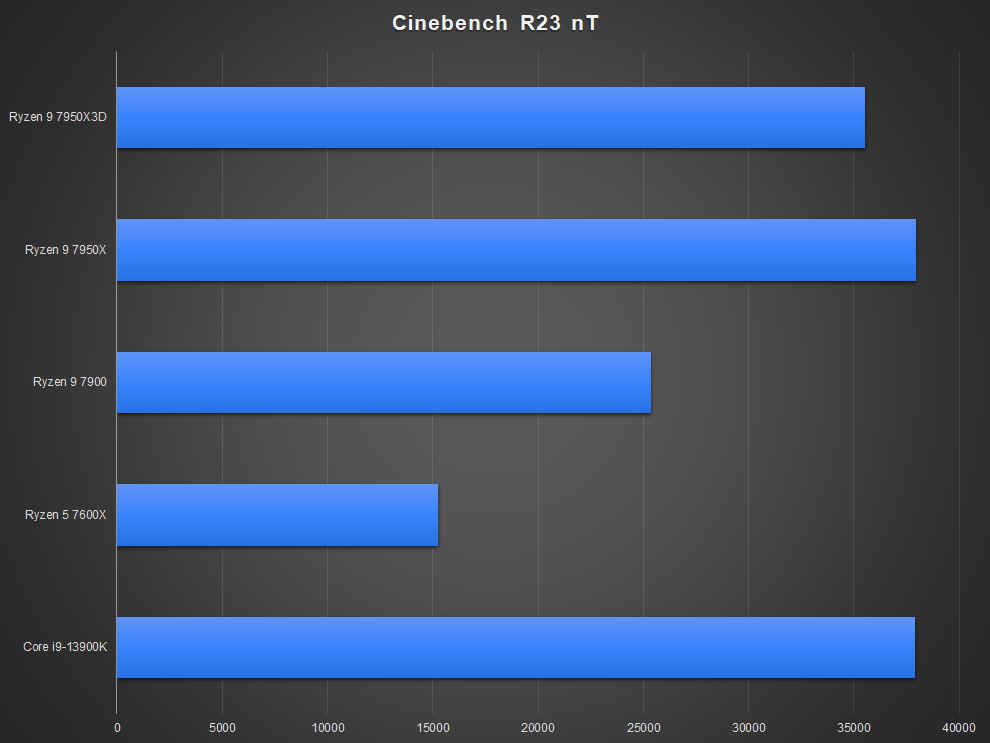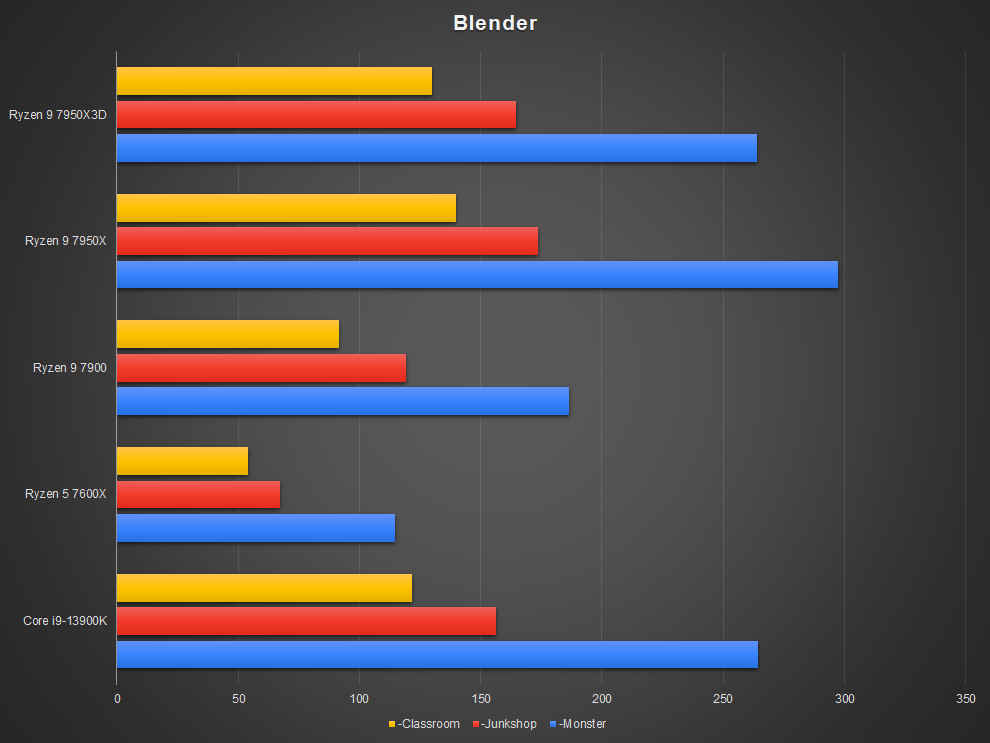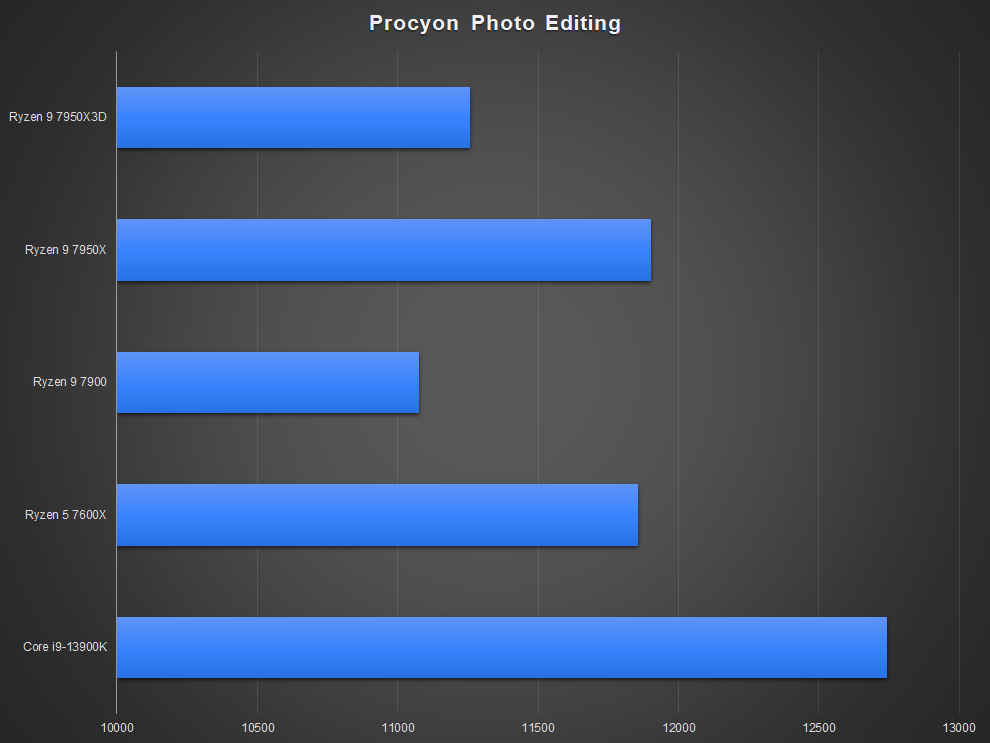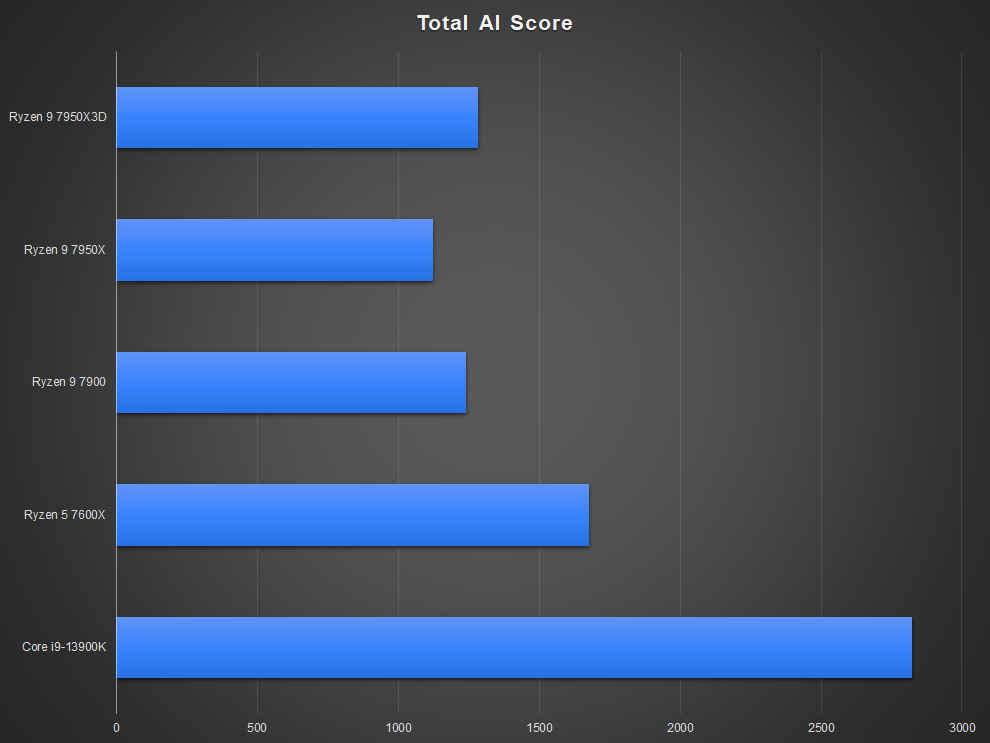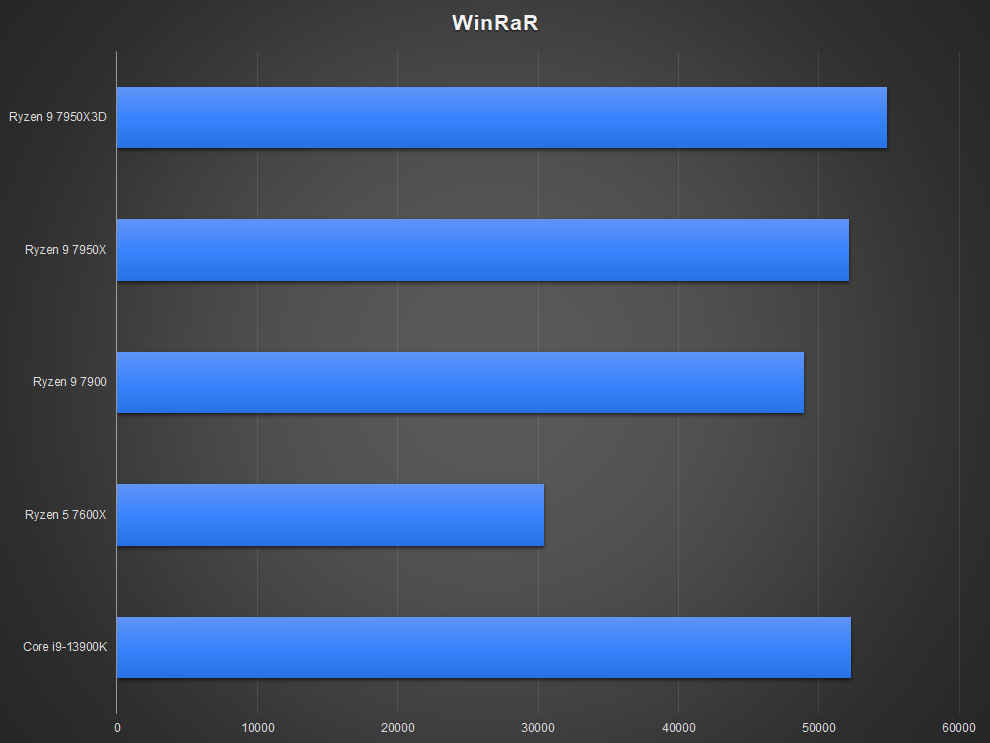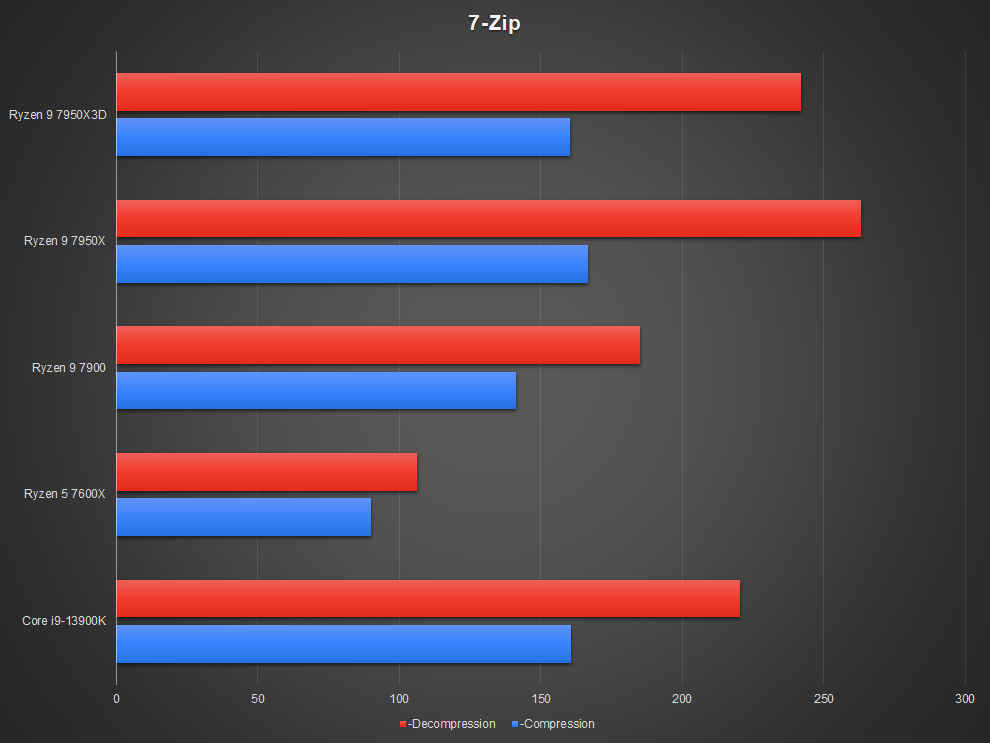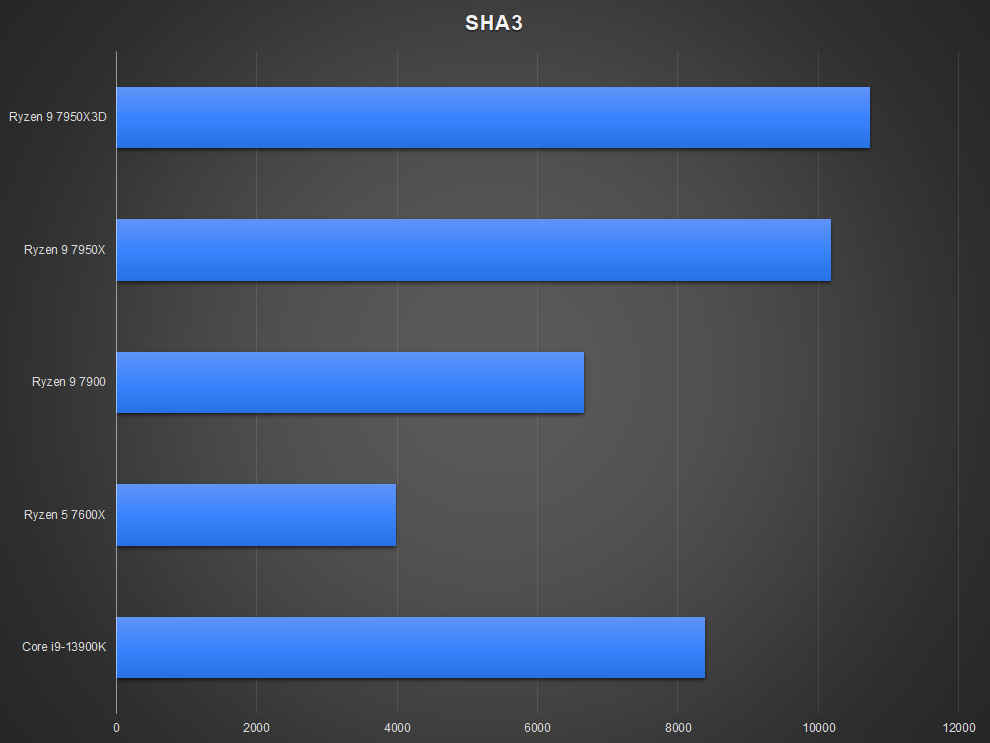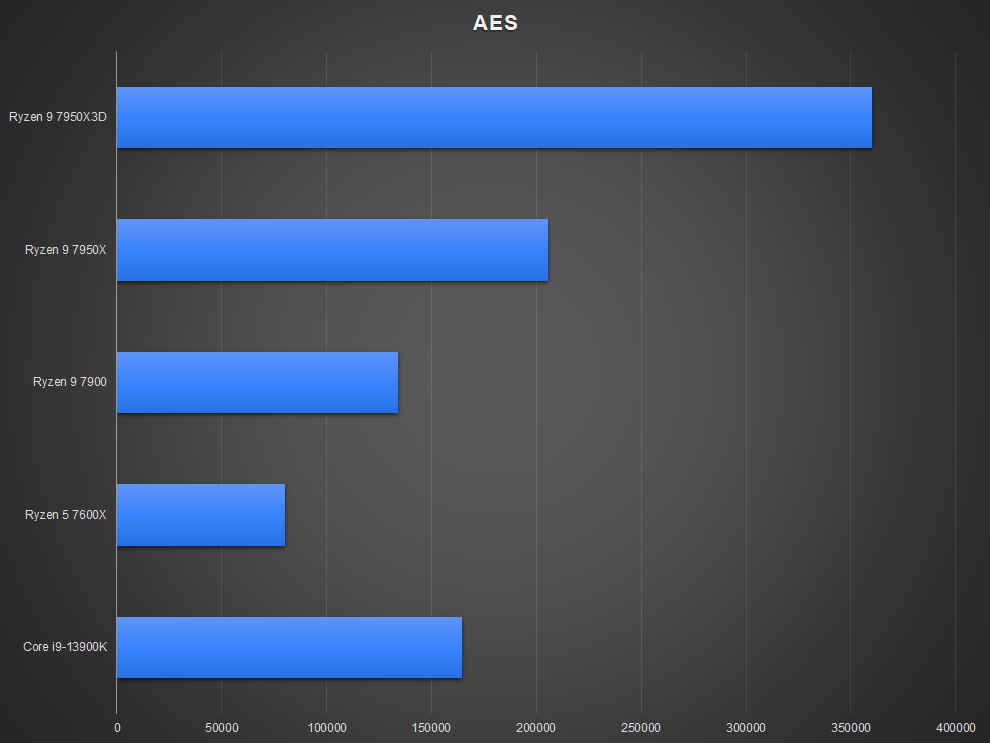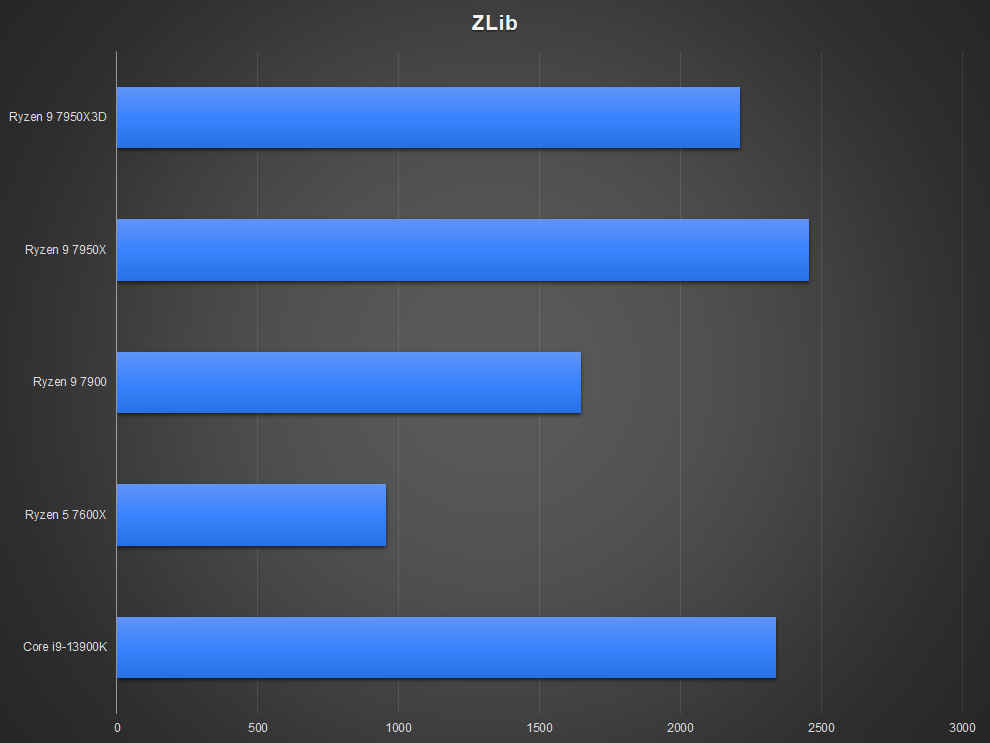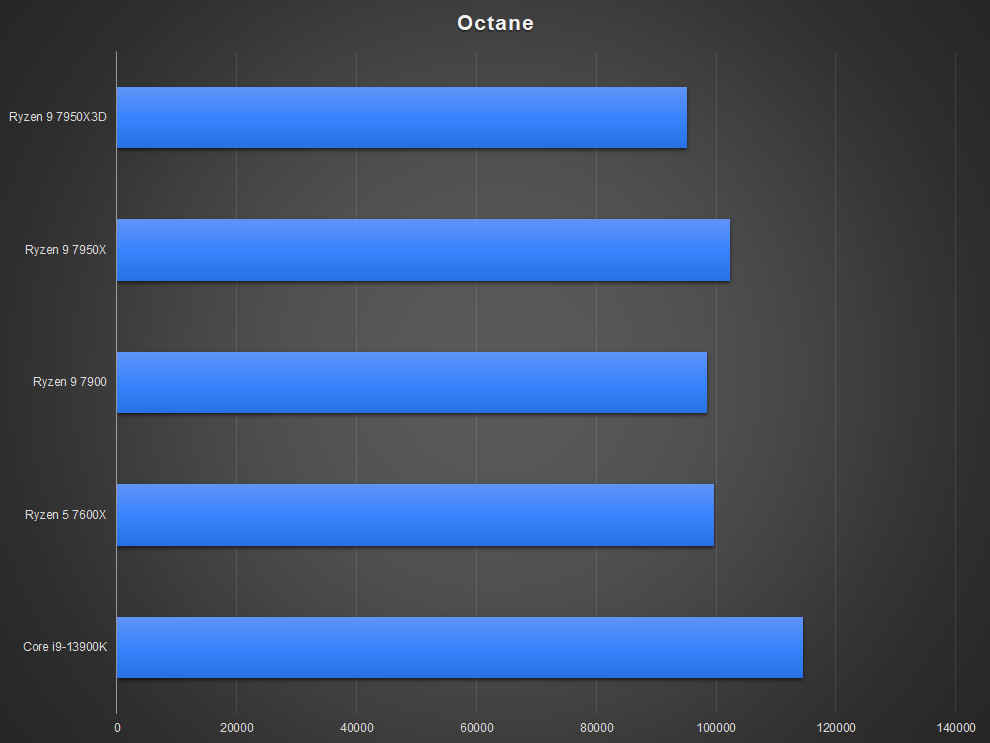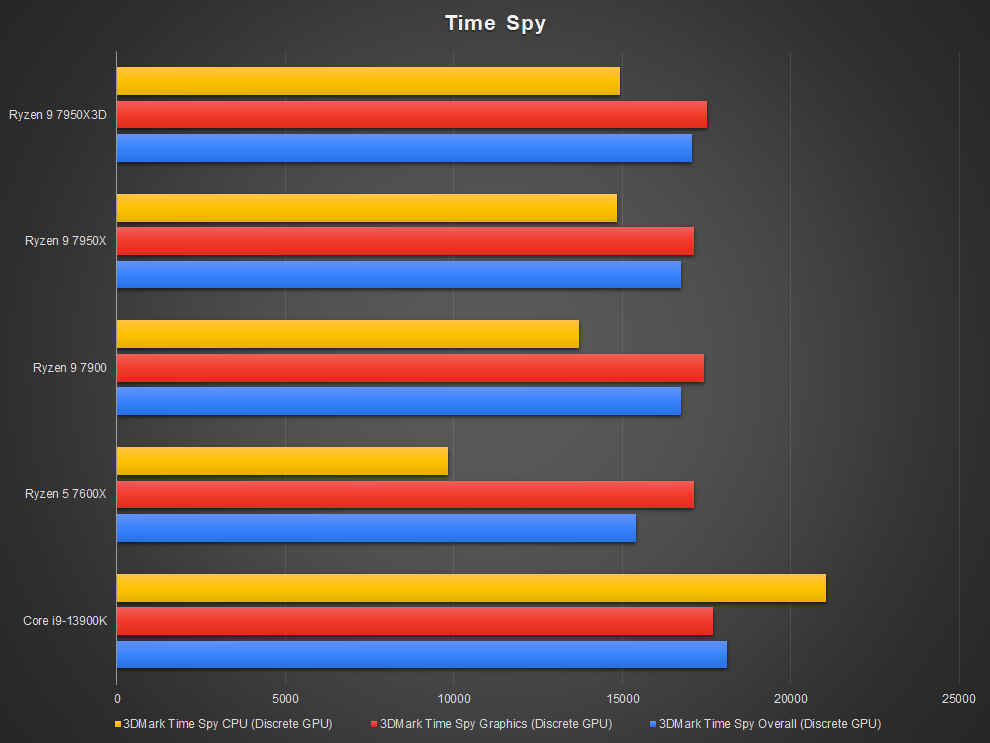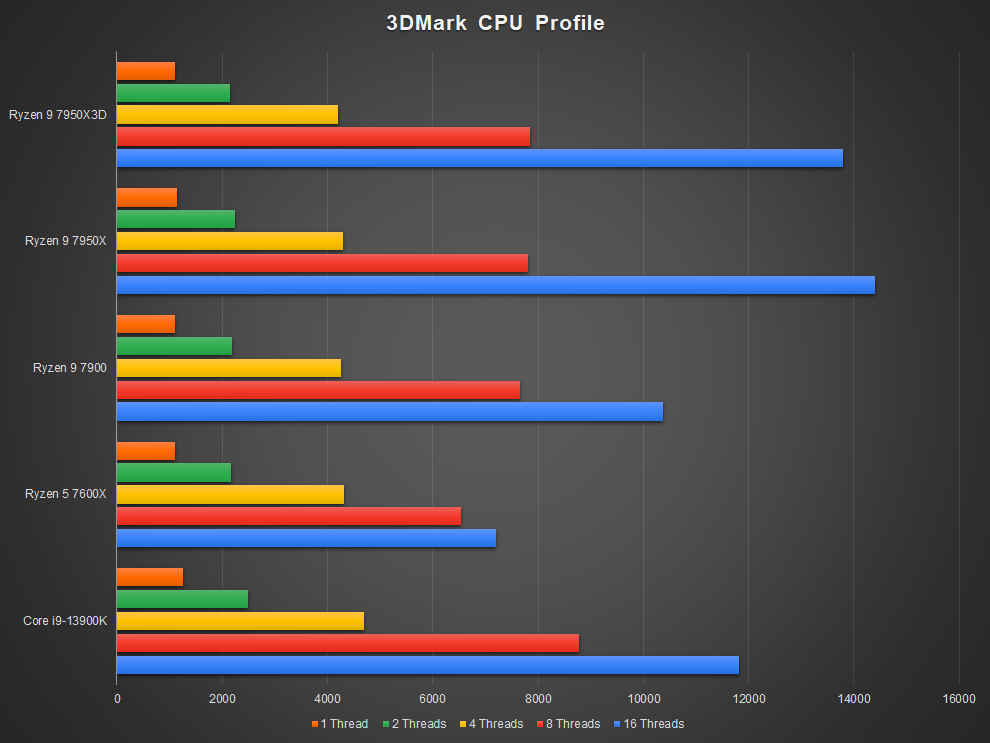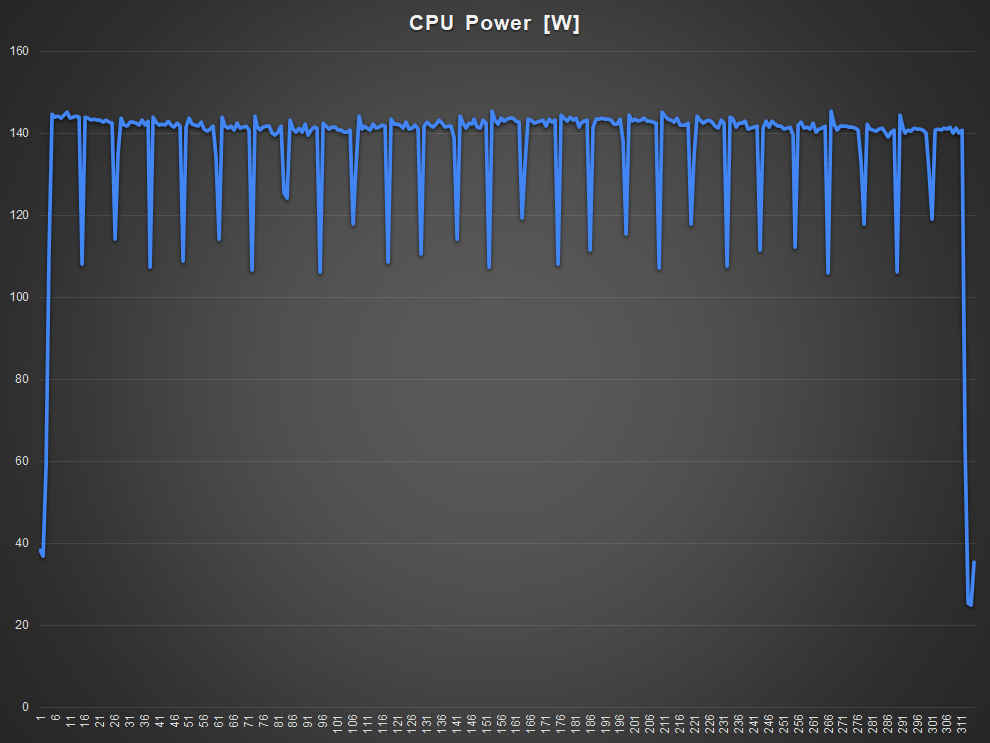AMD Ryzen 9 7950X3D Desktop Processor Review : 128MB of L3 Cache works its magic
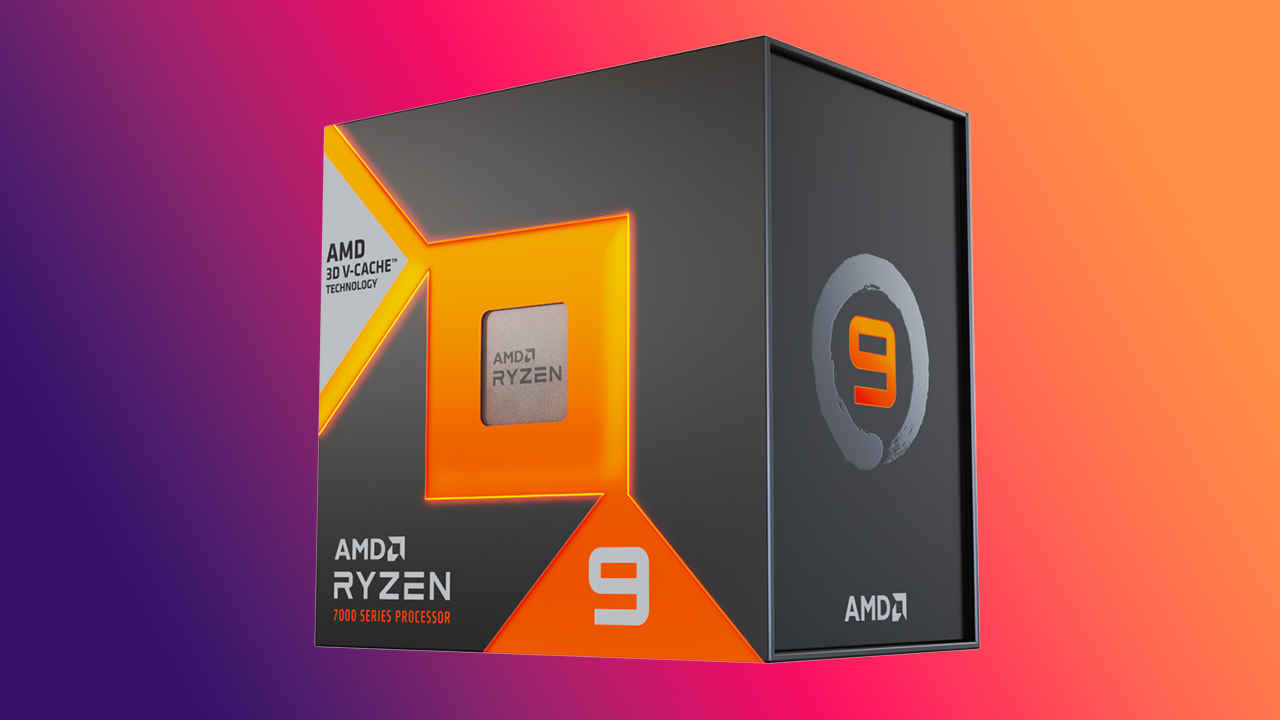
- Massive L3 Cache thanks to 3D SRAM stacking, Lower power consumption than AMD Ryzen 9 7950X
- AI performance still lags behind, Lower base clock
AMD has yet another winner in its hands with the AMD Ryzen 9 7950X3D which takes the crown away from Intel in the gaming domain. AMD still has a lot of roads to cover and it's not yet a clean sweep for Team Red but with each new release, AMD is encroaching into territories where Intel has been untouchable. Coming to the question – Whether you should get the 7950X or the 7950X3D? Well, if your usage is going to be gaming-heavy, then go for the 7950X3D. The 7950X still has a place thanks to its higher thermal headroom but as these processors get more efficient, we should see 3D V-Cache becoming more commonplace. For INR 60,599, the AMD Ryzen 9 7950X3D would have been a great buy. Unfortunately, the Indian pricing for the 7950X3D is INR 70,788 which is about 10K higher than the 7950X. This is strange considering that both feature an MSRP of USD 699. Considering that there are trade-offs between the 7950X and the 7950X3D, you can't say that one processor is better than the other across all workloads and therefore, can't command a higher price. So at the price of INR 70,788, you're better off with the vanilla Ryzen 9 7950X.
AMD experimented with 3D SRAM stacking technology with their AMD Ryzen 7 5800X3D processor and had a winner in their hands and we now have more processors with the same tech coming out with the 7000 family. Having faster memory closer to the cores gave a tremendous boost to the performance in several workloads but the performance gains in gaming were the most prominent. So much so that the AMD Ryzen 7 5800X3D still beats processors that launched after it and are of a higher tier. And with the Ryzen 7000 family out, AMD is expanding on their little experiment and coming out with a lot more ‘X3D’ processors. The launch lineup includes the AMD Ryzen 9 7950XD, AMD Ryzen 9 7900XD, and the AMD Ryzen 7 7800XD. Compared to the vanilla Ryzen 9 7950X (if at all you can call a flagship processor “vanilla”), the AMD Ryzen 9 7950X3D has 64MB more cache on the die. That’s a lot more memory for video games to exploit and get some extra frames out.
The AMD Ryzen 9 7950X3D will be priced the same as the normal Ryzen 9 7950X. That’s USD 699 or INR 60,599. Obviously, you’d be wondering why anyone would want to get the vanilla 7950X in that case, read on to know where the vanilla processor excels.
AMD Ryzen 9 7950X3D Specifications
The AMD Ryzen 9 7950X3D has quite a few things that are different with the core configuration. We’ve already seen how the 3D V-Cache can drastically improve performance with the 5800X3D and the 7950X3D looks like it’s aiming to do the same.
| Processor | 7950X | 7950X3D |
|---|---|---|
| Socket | AM5 | AM5 |
| Codename | Raphael | Raphael |
| Foundry | TSMC | TSMC |
| Core Process | 5 nm | 5 nm |
| Core Architecture | Zen 4 | Zen 4 |
| Transistor | 6500 mil | |
| Die Size | 70 mm2 | 71 mm2 |
| I/O Process | 6 nm | 6 nm |
| I/O Die Size | 122 mm2 | 122 mm2 |
| tCaseMax | 95°C | 89°C |
| Launch Date | 27-Sep-2022 | 28-Feb-2023 |
| Cores | 16 | 16 |
| – Big Cores | 16 | 16 |
| – Small Cores | 0 | 0 |
| Threads | 32 | 32 |
| Integrated Graphics | RDNA2 | RDNA2 |
| Integrated Graphics Cores | 2 | 2 |
| IG Base Frequency | 400 MHz | 400 MHz |
| IG Turbo Frequency | 2200 MHz | 2200 MHz |
| Cache L1 | 64K Per Core | 64K Per Core |
| Cache L2 | 1M Per Core | 1M Per Core |
| Cache L3 | 64 MB | 128 MB |
| Base Clock | 100 MHz | 100 MHz |
| Base Multiplier | 45x | 42x |
| Unlocked Multiplier | Yes | Yes |
| Big Core Base Frequency | 4.5 GHz | 4.2 GHz |
| Big Core Turbo Clock | 5.7 GHz | 5.7 GHz |
| Small Core Base Frequency | NA | NA |
| Small Core Turbo Clock | NA | NA |
| Memory Type Support | DDR5 | DDR5 |
| Max Memory Capacity | 128 GB | 128 GB |
| Rated Memory Clock Speed | 5200 MT/s | 5200 MT/s |
| Memory Channel Support | Dual-Channel | Dual-Channel |
| ECC Memory Support | No | Yes |
| PCIe Gen | 5 | 5 |
| PCIe Lanes from CPU | 24 | 24 |
| TDP | 170 W | 120 W |
The IO Die is the same as the models without 3D V-Cache and the GPU has also remained the same. It’s the same configuration with 2x RDNA2 cores that are clocked at 400 MHz with a boost clock of 2200 MHz. What has changed is the TDP which has been brought down from 170W to 120W. So a lot of the thermal headroom that the 7950X had has been taken away from the 7950X3D. Then again, we’ve seen how the 65W units have come close to performing as the higher TDP units, so the net performance difference might not be that much.
With a reduction in TDP, there is a reduction in the base frequency as well. The vanilla 7950X was clocked at 4.5 GHz with a boost clock of 5.7 GHz but the AMD Ryzen 9 7950X3D is clocked at 4.2 GHz and has the same boost clock of 5.7 GHz. So when the need arises, the 7950X3D can ramp up for bursty performance but the time it can sustain at peak load will be different.
And like all the other AMD Ryzen 7000 processors, the 7950X3D also supports ECC memory provided that the motherboard that it is paired with supports the same. Overall, there are several tradeoffs between the AMD Ryzen 9 7950X and the 7950X3D for both of them to warrant the same space. What’s also exciting to see would be which processor sells the most in the coming months.
AMD Ryzen 9 7950X3D Performance
Rendering
Like always, we start off with Cinebench R23 which scores 35540 in the multi-threaded run and 2021 in the single-threaded run. Compared to the vanilla 7950X, that’s a little higher than the single-thread score but the multithread score takes a hit.
In Blender, we see the AMD Ryzen 9 7950X3D score 264, 165, and 130 in the Monster, Junkshop, and Classroom benchmarks, respectively. Again, this is a little lesser than the AMD Ryzen 9 7950X which had scored about 10 points higher in Junkshop and Classroom whereas, in Monster, it scored a little over 35 points ahead.
Content Creation
In the Procyon benchmarks for content creation, the AMD Ryzen 9 7950X3D performs a little below the 7950X and the Intel Core i9-13900K but ahead of the 7900X in the Image Retouching segment.
However, in the Batch processing benchmark, it performs better than the Intel Core i9-13900K and the 7900X but still lags behind the 7950X. Under the video editing benchmark, the benchmark failed several times. Hopefully, this should stabilise over time.
AI/ML
AI workloads also favour larger memory sources closer to the CPU and we can see the 7950X3D scoring higher than the 7950X by a decent margin. However, Intel has always had the upper hand in AI benchmarks since they’ve had an IGP that’s been leveraged by OEMs worldwide for a couple of years. So the 7950X3D falls behind like all the remaining AMD processors. Our current AI benchmarks are purely synthetic scripts and we’ll shortly be adding several real-world benchmarks to show a well-rounded representation.
Compression/Decompression
Coming to compression/decompression algorithms, we use 7-Zip and WinRaR to see how processors deal with a very common use case in modern operating systems. The 7950X scores higher than the 7950X and even the Intel Core i9-13900K. The same can be seen with WinRaR where the 7950X3D scores a little higher than the 7950X and the Intel Core i9-13900K.
Encryption
In our tests, Zlib encryption saw the 7950X3D was a little behind whereas in the AES and SHA3 benchmarks, the 7950X3D easily jumps ahead.
Browser
In browser benchmarks, Intel has had an advantage for quite some time. In the Octane bench, we see the 7950X3D score a little lower than the 7950X as well as the 13900K. These benchmarks favour higher clock speeds and the 7950X3D has a lower clock, so the drop in performance is understandable.
Gaming
Gaming is where the 3D V-Cache really excelled with the AMD Ryzen 7 5800X3D and no doubt, everyone would be most excited to see how the successors perform. We started out with synthetic benchmarks and 3DMark is first on our list.
With a discrete graphics card connected, the scores in 3DMark Time Spy were higher than vanilla 7950X but a smidge below the Intel Core i9-13900K. Whereas in the CPU Profile benchmark, we noticed that the scores were higher on the 7950X3D when 16 Threads were running. However, when the threads dropped to 8, 4, 2, and 1, the Intel flagship had an advantage.
Coming to real-world gaming tests. We can see the AMD Ryzen 9 7950X3D pulling ahead of the 7950X in quite a lot of gaming benchmarks. Riftbreaker is where we saw the highest delta whereas, in games such as Far Cry 6, the 7950X3D is neck and neck with the 13900K. In F1 2022, the Intel 13900K is a little ahead of the 7950X3D. In Witcher 3: The Wild Hunt, the Intel 13900K retains its lead. Shadow of the Tomb Raider reverses that with the AMD Ryzen 9 7950X3D inching ahead. So we've seen quite a lot of movement in the video game performance benchmarks with the AMD Ryzen 9 7950X3D taking the crown away from Intel in a lot of titles while not having much success in some titles. Overall, the 7950X3D is an equal if not a better gaming processor.
Power
With a lower TDP, the power consumption levels are expected to be lower. How low? Well, the 7950X would consume 210 watts on average in a high-demand scenario with peak wattage being 220+ watts. Compared to that, the 7950X3D consumes 125 watts on average in the same high-demand scenario with peak levels hitting 145 watts.
Verdict
AMD has yet another winner in its hands with the AMD Ryzen 9 7950X3D which takes the crown away from Intel in the gaming domain. AMD still has a lot of roads to cover and it's not yet a clean sweep for Team Red but with each new release, AMD is encroaching into territories where Intel has been untouchable. Coming to the question – Whether you should get the 7950X or the 7950X3D? Well, if your usage is going to be gaming-heavy, then go for the 7950X3D. The 7950X still has a place thanks to its higher thermal headroom but as these processors get more efficient, we should see 3D V-Cache becoming more commonplace. For INR 60,599, the AMD Ryzen 9 7950X3D would have been a great buy. Unfortunately, the Indian pricing for the 7950X3D is INR 70,799 which is about 10K higher than the 7950X. This is strange considering that both feature an MSRP of USD 699. Considering that there are trade-offs between the 7950X and the 7950X3D, you can't say that one processor is better than the other across all workloads and therefore, can't command a higher price. So at the price of INR 70,799, you're better off with the vanilla Ryzen 9 7950X.
AMD Ryzen 9 7950X3D Desktop Processor Key Specs, Price and Launch Date
| Release Date: | |
| Market Status: | Launched |
Key Specifications
Mithun Mohandas
Mithun Mohandas is an Indian technology journalist with 14 years of experience covering consumer technology. He is currently employed at Digit in the capacity of a Managing Editor. Mithun has a background in Computer Engineering and was an active member of the IEEE during his college days. He has a penchant for digging deep into unravelling what makes a device tick. If there's a transistor in it, Mithun's probably going to rip it apart till he finds it. At Digit, he covers processors, graphics cards, storage media, displays and networking devices aside from anything developer related. As an avid PC gamer, he prefers RTS and FPS titles, and can be quite competitive in a race to the finish line. He only gets consoles for the exclusives. He can be seen playing Valorant, World of Tanks, HITMAN and the occasional Age of Empires or being the voice behind hundreds of Digit videos. View Full Profile

